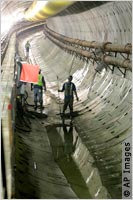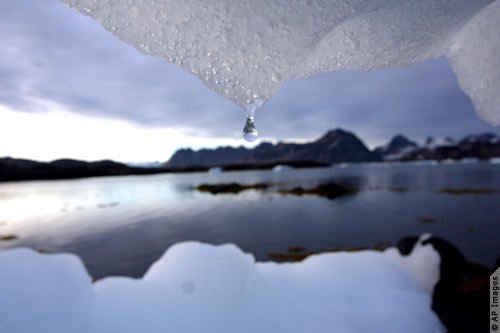 Washington : Growing up in northern India, Gurmehar Singh learned at an early age to turn off lights when leaving a room and to close the water tap when brushing his teeth. Caring about the environment, he says, “is in my blood.”
Washington : Growing up in northern India, Gurmehar Singh learned at an early age to turn off lights when leaving a room and to close the water tap when brushing his teeth. Caring about the environment, he says, “is in my blood.”
Now a 19-year-old student at Guru Nanak Dev Engineering College in Ludhiana, a city of 4.5 million in the state of Punjab, Singh is a tireless advocate for all things green. His biggest undertaking yet: A campaign to make his campus into India’s first carbon-neutral school.
After managing to get plastic bags and motorbikes banned from campus, Singh designed an electricity savings plan for his school. By switching out all incandescent light bulbs to compact fluorescent and light-emitting diode bulbs (LEDs), the campus could reduce power consumption and costs by half or more, he calculated.
“I carried out an energy audit by myself, made a proposal and gave it to the college, but it was too much of a cost,” he said. “I kept asking for partnerships or sponsorships, but nobody was too interested in that. Even the electricity companies, they said they would reduce [the cost of] LEDs, but not provide them for free.”
But an alumni group of former students, which met on campus early this year, was impressed when Singh showed up to make a presentation and plead for help. The group decided to fully fund the carbon-neutrality project, which also includes installing solar-heated common kitchens in dormitories and exploring the use of small wind-energy generating stations on campus.
The college’s electricity costs have already dropped by 40 percent, Singh says, “and the project isn’t yet completed.”
His petition to force auto rickshaws in the city to switch from diesel to natural gas fuel was not as successful. In 2009, the Punjab and Haryana High Court ordered all rickshaws in Ludhiana to switch fuels to improve city air quality, but the court’s order never was enforced.
“You can’t arrest 40,000 rickshaw pullers. If you stop them, people in the city can’t transport,” Singh says. “And even if you replace the 40,000 rickshaws, we need filling stations [for natural gas] and land for filling stations. The industrial area needs to be re-modified, and the town plan does, too. No government official is ready to face such issues.”
(This is a product of the Bureau of International Information Programs, U.S. Department of State. Web site: http://www.america.gov)
[Editor's Note: While this is a commendable effort on the part of Gurmehar Singh (Guru's "Mehar" be on him always), at the micro-level, a lot needs to be done on a macro-level, by every one. Here are some thoughts and actions being considered/done by others. Excerpts only from various articles.]
By the Numbers
236,000,000,000: Number of tons of carbon emitted around the world between 2000 and 2006. (Science News)
41: Percentage the Indonesian government has pledged to cut greenhouse gas emissions by working with private and education-sector partners. (GeoConnexion)
728: Number of nongovernmental organizations (NGOs) accredited by the United Nations Convention to Combat Desertification. (U.N.)
3,287: Number of NGOs accredited by the United Nations Economic and Social Council. (U.N.)
3,244: Number of media and environmental groups participating in the Climate Change Media Partnership between Panos London and the U.K.'s Department for International Development. (DFID)
9,000: Number of bloggers participating in Blog Action Day 2009 to blog about climate change. (Grist)
$10,000,000,000: Money allocated by the Africa Partnership Forum in 2010 to combat climate change in Africa. (Africa Partnership Forum)
1,000: Number of young people that took part in the 2009 U.N. Climate Change Conference in Copenhagen through various youth alliances. (U.S. Youth for Sustainable Development)
15,000: Approximate number of young people who attended Shore Thing, a New Year's Eve party, on Australia's Bondi Beach in 2009. (In The Mix)
50,000: Number of young people who are part of the Australian Youth Climate Coalition. (AYCC)
282,000: Number of young people who attended Australia's Big Day Out music festival in 2008. (Music News)
31: Percentage increase from the number of journalists who attended the 2007 Bali climate change conference through the Climate Change Media Partnership to the number who attended the 2009 Copenhagen conference. (Climate Change Media Partnership)
5,000: Approximate number of journalists at the 2009 U.N. Climate Change Conference in Copenhagen. (The Guardian)
20,000: Approximate number of journalists accredited for the 2010 World Cup. (Avaya)
70,000,000: Number of mobile phone subscribers in India with access to a game developed through a partnership between the Danish and Indian governments to teach climate change. (The Copenhagen Post)
80: Percentage of the world's total carbon footprint that comes from the G20 countries. (PittsburghSummit.gov)
3: Percentage of the world's total carbon footprint that comes from the poorest billion people. (UNIFEM)
500: Number of times someone in Africa is more likely to suffer a climate-change related death than someone in the developed world. (UNIFEM)
11.5: Percentage decline in carbon emissions by a Fortune 500 company, Johnson & Johnson, due to a partnership with the World Wildlife Foundation's Climate Savers program. (Climate Change Corp.)
3,500: Number of kilometers driven across India by the solar-integrated Reva Electric car to raise climate change awareness. (India Climate Change Solutions)
(This is a product of the Bureau of International Information Programs, U.S. Department of State. Web site: http://www.america.gov)
Less Driving, Better Vehicles: Keys to Energy, Climate Causes
Cultural shift, new technologies may transform transport in the future
Subway tunnel(AP Images) A subway segment being constructed in Pittsburgh is an example of public transport projects pursuedby U.S. cities. This is the first article in a two-part series on transportation and advanced vehicles.
By Andrzej Zwaniecki, Staff Writer
Washington — When asked if gasoline-electric hybrid and plug-in hybrid vehicles are the most promising auto technologies, Rob Farrington paused. It wasn’t that he did not know the answer. After all, he heads the advanced vehicle group at the National Renewable Energy Laboratory in Golden, Colorado. It was that the question did not address the real issue.
“The most promising solution to our dependence on imported oil and the climate change challenge is to get people to use transportation other than individual vehicles,” he said.
Like bicycles?
Yes, biking, hiking, ride sharing and telecommuting are all part of the solution.
“These are the things we have infrastructure for and there is no additional cost involved,” he said.
But above all, he meant public transport.
“It’s not a tech solution, so it is not fashionable,” he said. “But the sooner we consider it seriously, the better.”
Most experts believe that a mix of advanced automotive technologies, better public transport and other alternatives to individual driving will be needed to reach the ambitious goals set by President Obama for 2020: 14 percent cut in U.S. greenhouse gas emissions below 2005 levels and 1.8 billion barrels of petroleum saved through vehicle fuel efficiency. Passenger vehicles and light trucks account for almost 45 percent of U.S. petroleum demand and 17 percent of greenhouse gas emissions, which contribute to global warming.
Making public transport a viable alternative to car commuting will require many infrastructure investments. Congress is likely to significantly increase funds for public transport infrastructure when it considers a transportation bill later this year. But transportation projects take considerable time to complete.
Plug-in electric hybrid technology, about which the president is particularly enthusiastic, is unlikely to make a significant impact on the market in the next few decades, according to analysts, despite a call from the White House to put a million such vehicles on the road by 2015.
Cars could run on ethanol made from household trash. But the net energy benefits of converting trash into fuel are unknown.
Farrington said it would take 15 years to replace the entire U.S. passenger auto fleet if every vehicle sold today were a hybrid or plug-in hybrid. Hybrids have been on the market for almost 10 years but make up only 3 percent of new vehicles sold today. What’s more, their producers have yet to make profits on them, according to Dave McCurdy, president of the Alliance of Automobile Manufacturers.
To maximize fuel savings and emission reductions in the shortest period, the focus should be on improving conventional gasoline-fueled internal-combustion vehicles and discouraging individual driving, experts say.
Policymakers, however, prefer to talk about the “transformation” of transportation and “transformative” technologies, according to John Heywood of the Massachusetts Institute of Technology, who has researched vehicle technologies.
“For politicians, ‘improving’ [vehicles] and ‘conserving’ [fuel] do not create the same sense of excitement as ‘transformation,’” he said.
Most analysts agree that research on advanced auto technologies should accelerate, and they praise the administration for putting up considerable funds for it. But Farrington cautioned against a singular focus on technology, which he said does not encourage the necessary cultural shift toward heavier reliance on public transport and more compact, walkable communities built around mass-transit hubs.
Part of the problem is the lack of comprehensive and consistent national energy and transportation strategies, McCurdy said at a June 18 public meeting.
At an earlier June meeting, Beth Osborne, deputy assistant secretary of transportation, said the administration works aggressively to come up with such strategies. But it faces a formidable task of breaking through bureaucratic walls separating different agencies, which have powers over different aspects of related issues, she said.
Efforts to come up with such strategies are further complicated by the fact that the goals of increasing energy security and decreasing global warming are not always compatible. For example, the United States can expand a range of secure sources of fuels by encouraging production of heavy oils on its own soil and in Canada, thus increasing energy security. But such production is energy-intensive and causes environmental damage.
Just a few years ago, biofuels, primarily ethanol, were viewed as a solution to both U.S. energy and climate problems. In 2007, Congress — motivated by security concerns — mandated a fivefold increase in their production. Now Congress is considering a bill that would require at least 80 percent of new automobiles to be able to operate on biodiesel or ethanol and methanol blends by 2015. Automakers have pledged that half of all vehicles produced by 2013 will have that capability.
But a number of studies have cast doubt on net climate benefits of biofuels, primarily corn-based ethanol.
Those studies “got us more cautious,” Heywood said.
That is why he and Farrington recommend “very aggressive” development of the next generation of biofuels — based on cellulosic biomass — whose climate benefits are expected to be more obvious.
Obama Administration Recording Greenhouse Gas EmissionsBy Bridget Hunter, Staff Writer
Environmental Protection Agency proposes expanded reporting system.
Refineries like the one in California would have to report greenhouse gas emissions to the Environmental Protection Agency.
Washington — The United States is seeking to increase the number of industry sectors that must report greenhouse gas emissions under a new mandatory reporting system.
The collected data would provide a better understanding of specific sources and help regulators and businesses develop effective ways to reduce emissions, according to the U.S. Environmental Protection Agency, the federal agency that regulates substances that could damage the environment. EPA announced the proposed rule March 23.
“Gathering this information is the first step toward reducing greenhouse emissions and fostering innovative technologies for the clean-energy future,” EPA Administrator Lisa Jackson said. “It’s especially important to track potent gases like methane, which traps more than 20 times as much heat as carbon and accelerates climate change. Once we know where we must act, American innovators and entrepreneurs can develop new technologies to protect our atmosphere and fight climate change.”
The 21st-Century Challenge
By Michael Specter
Award-winning writer Michael Specter has been a staff writer at The New Yorker magazine since 1998. His awards include the Global Health Council’s Annual Excellence in Media Award (2002 and 2004) and the American Association for the Advancement of Science 2002 Science Journalism Award. His new book, Denialism: How Irrational Thinking Hinders Scientific Progress, Harms the Planet, and Threatens Our Lives, will be published in October 2009 (The Penguin Press).
The melting Greenland ice sheet is seen through an iceberg in Kulusuk, near the Arctic Circle. Polar melt, which may exacerbate effects of climate change, is more rapid than scientists anticipated. The reality of global warming must supersede debate about it, and urgent steps must be taken to reduce greenhouse gas emissions before it is too late, Specter writes in this overview of the issue.
People who refuse to accept the truth — that AIDS is caused by a virus, for example, or that global warming is genuine and the result of human activity – will always be with us. But as the profoundly disturbing facts about the pace of warming become increasingly evident, the cries of climate change denialists seem finally to have been overcome by the mounting series of grim realities. Those realities are both obvious and subtle: Between 1961 and 1997, the world’s glaciers lost nearly 4,000 cubic kilometers of ice; since the Arctic is warming at nearly three times the global average, Greenland’s ice sheet may already have passed the point of saving.
The Need for Action on Climate Change Is Urgent
By Cheryl Pellerin, Staff Writer
U.N. secretary general calls on world to make changes now.
People on icecap, ship in background (Courtesy United Nations/Mark Garten) Ban Ki-moon visits the polar ice rim September 1 to highlight climate change. Geneva — On September 3, the day before the final session at the World Climate Conference-3 in Geneva, U.N. Secretary-General Ban Ki-moon spoke urgently to delegates from 165 countries and to members of the press. He had just returned from the Arctic, where he’d sailed for nine hours from the world’s northernmost settlement to reach the polar ice rim.
“Our foot is stuck on the gas pedal. We have to pull it off,” he said.
He had gone to the Arctic to see for himself the visible impacts of climate change and, he said, “to inject much-needed urgency into the climate-change debate. I went to the Arctic to raise again political leadership among the leaders of the world. I will continue to speak out on this issue until we seal a deal. A deal that will be comprehensive, balanced and equitable and fair for the future of human beings.”
The deal he mentioned is a new climate change agreement that he and many others around the world hope will be forged in Copenhagen, Denmark, December 7–18 at the 15th meeting of the parties to the U.N. Framework Convention on Climate Change.
The U.N. Seal the Deal campaign seeks a focus in Copenhagen on five issues:
• Individual targets industrialized countries will set to reduce greenhouse gas emissions.
• Actions developing countries will take to limit the growth of their emissions.
• Finances that will be made available to developing countries unable to act without support.
• An efficient institutional mechanism for disbursing funds and an equitable, accountable, governance structure.
• A framework that will bolster the climate resilience of vulnerable countries and protect lives and livelihoods.
Bibliography:
Read more: http://www.america.gov/st/energy-english/2010/June/20100617162517KseviR0...
http://www.america.gov/st/energy-english/2010/April/20100427152618wrybak...
http://www.america.gov/st/energy-english/2010/April/20100427152618wrybak...
http://www.america.gov/st/business-english/2009/July/20090625150045saikc...
http://www.america.gov/st/energy-english/2010/March/20100324111854abretn...
Read more: http://www.america.gov/st/energy-english/2009/September/20090917131155ml...
http://www.america.gov/st/energy-english/2009/September/20090916142912lc...
Read more: http://www.america.gov/st/energy-english/2009/September/20090916142912lc...




